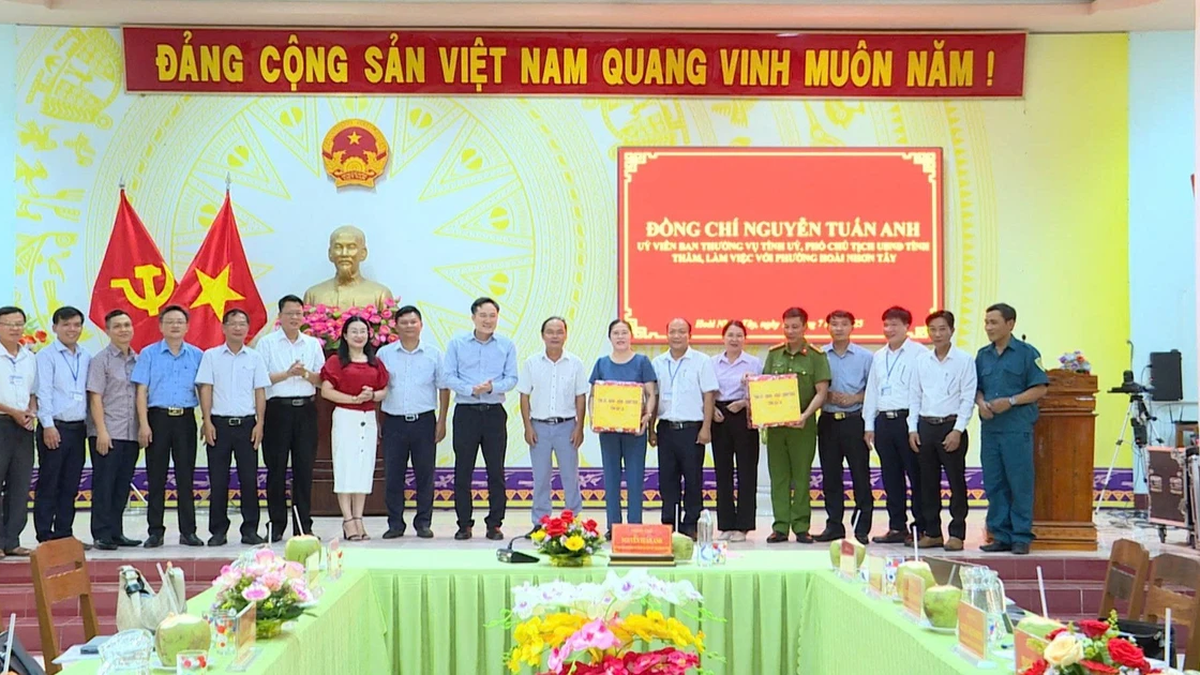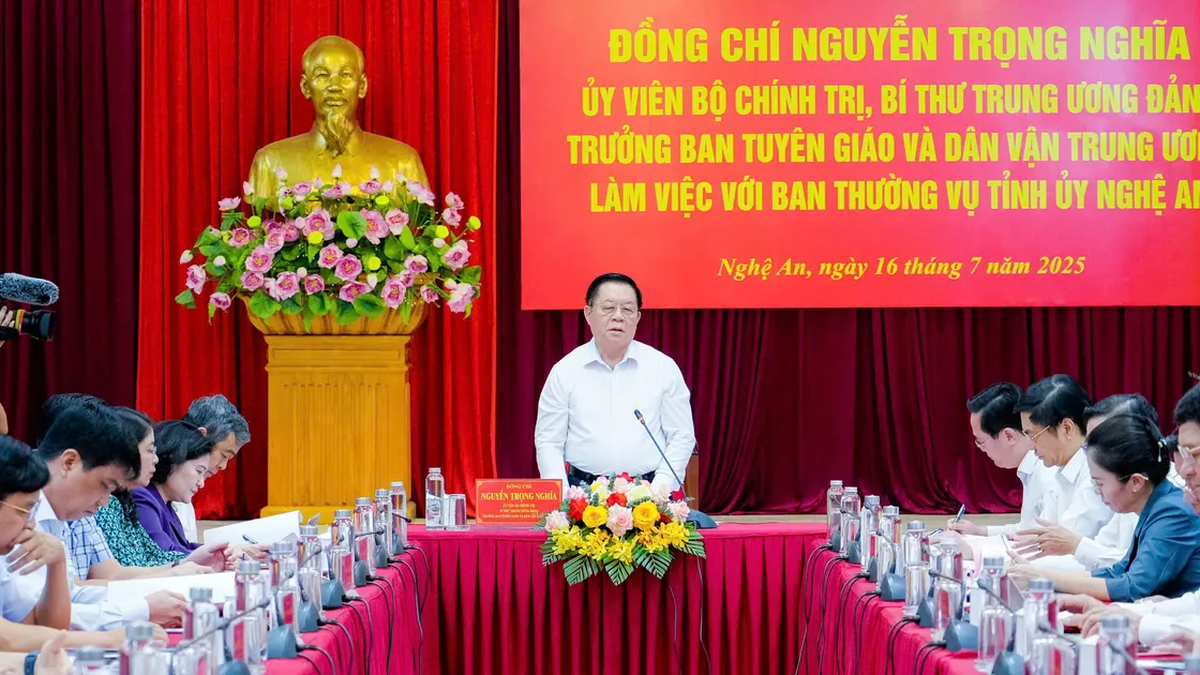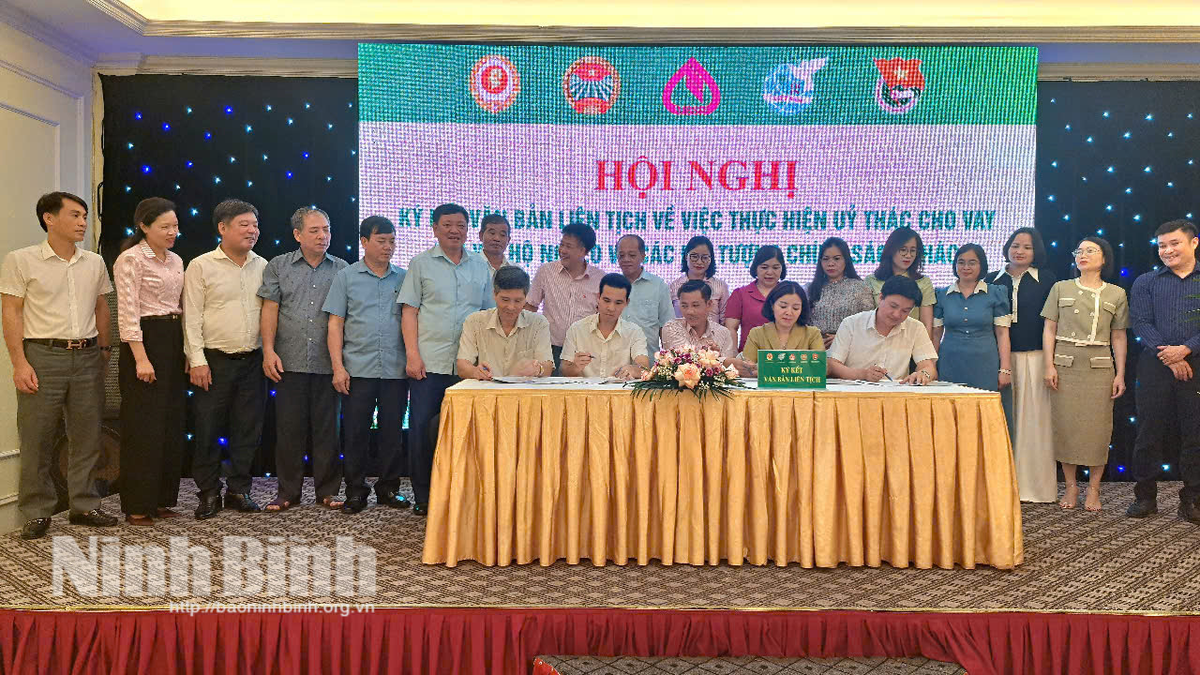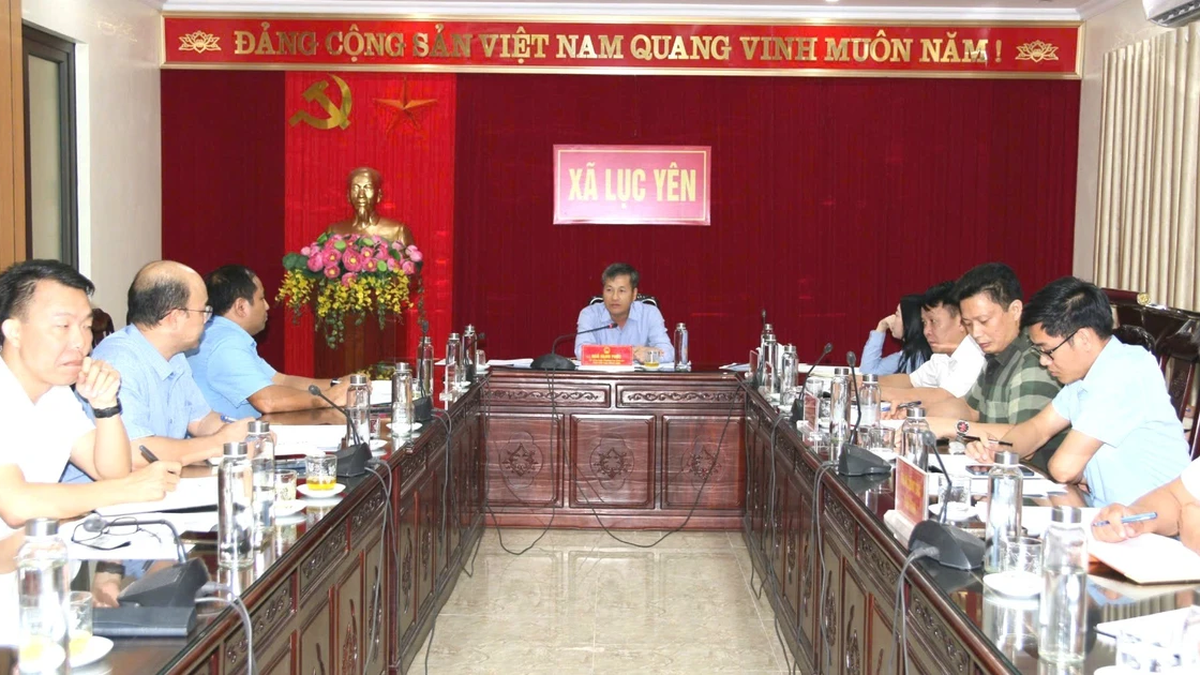Throughout history, the land of Ha Tinh has changed its organization, administrative boundaries and name many times. During the Hung King period, Ha Tinh belonged to Cuu Duc district, one of the 15 districts of Van Lang country. In the early 6th century, the Liang Dynasty changed Cuu Duc to Duc Chau. At the end of the 6th century, the Sui Dynasty changed Duc Chau to Hoan Chau. In 607, Duc Chau was incorporated into Nhat Nam. In 622, the Tang Dynasty changed Nhat Nam district to Nam Duc district, then Duc Chau, and in 627 changed it to Hoan Chau. The name Hoan Chau was kept until the end of the Chinese domination. There were also many changes during the Dai Viet period.
Throughout history, the land of Ha Tinh has changed its organization, administrative boundaries and name many times. During the Hung King period, Ha Tinh belonged to Cuu Duc district, one of the 15 districts of Van Lang country. In the early 6th century, the Liang Dynasty changed Cuu Duc to Duc Chau. At the end of the 6th century, the Sui Dynasty changed Duc Chau to Hoan Chau. In 607, Duc Chau was incorporated into Nhat Nam. In 622, the Tang Dynasty changed Nhat Nam district to Nam Duc district, then Duc Chau, and in 627 changed it to Hoan Chau. The name Hoan Chau was kept until the end of the Chinese domination. There were also many changes during the Dai Viet period.
In 1831, King Minh Mang, on a national scale, separated the two prefectures of Ha Hoa and Duc Tho of Nghe An town to establish Ha Tinh province. This was an important date in the history of Ha Tinh, proving that this land had met all the conditions to become an administrative unit directly under the central court. The 2nd session of the 5th National Assembly (December 27, 1975) decided to merge the two provinces of Nghe An and Ha Tinh into Nghe Tinh province.
The 9th session of the 8th National Assembly (August 16, 1991) decided to split Nghe Tinh province into two provinces, Nghe An and Ha Tinh.
Currently, Ha Tinh province has 1 city under the province, 2 towns and 10 districts including: Ha Tinh city, Hong Linh town, Ky Anh town and Nghi Xuan, Duc Tho, Huong Son, Huong Khe, Vu Quang, Can Loc, Thach Ha, Loc Ha, Cam Xuyen, Ky Anh districts (including 4 districts and 1 mountainous town); there are 262 communes, wards and towns.
1. Geographical Location of Ha Tinh
Ha Tinh stretches from 17°54' to 18°37' North latitude and from 106°30' to 105°07' East longitude. It borders Nghe An province to the north, Quang Binh province to the south, Borikhamxay and Khammuane provinces of Laos to the west, and the East Sea to the east. Ha Tinh is located 340 km south of Hanoi , in the east of the Truong Son mountain range with narrow, steep terrain and sloping from west to east, with an average slope of 1.2%, in some places 1.8%. The territory runs northwest - southeast and is strongly divided by small rivers and streams of the Truong Son range with many transitional and interlaced terrains. The eastern slope of the Truong Son range is located in the west, with an average altitude of 1,500 meters, Rao Co peak is 2,235 meters, below is a low hill area like an upside-down bowl, next is a small narrow plain running to the sea with an average altitude of 5 meters and finally a coastal sand range divided by many estuaries.
The territory runs northwest - southeast and is strongly divided by small rivers and streams of the Truong Son range with many transitional and interlaced terrains. The eastern slope of the Truong Son range is located in the west, with an average altitude of 1,500 meters, Rao Co peak is 2,235 meters, below is a low hill area like an upside-down bowl, next is a small narrow plain running to the sea with an average altitude of 5 meters and finally a coastal sand range divided by many estuaries.
2. Ha Tinh Climate
Ha Tinh is located in a tropical monsoon area, hot and humid, with lots of rain. In addition, Ha Tinh is also affected by the transitional climate between the North and the South, with the typical tropical climate of the South and a cold winter of the North; so the weather and climate are very harsh. Every year, Ha Tinh has two distinct seasons: rainy season and summer. Summer: From April to October, this is the season of intense sunshine, prolonged drought accompanied by many hot and dry southwest winds (Lao winds), temperatures can reach over 40oC, from the end of July to October there are often many storms accompanied by heavy rain causing flooding in many places, the largest rainfall is 500 mm/day and night. Winter: From November to March of the following year, this season mainly has the northeast monsoon with cold winds and drizzle, temperatures can drop to 7oC.
3. Ha Tinh Traffic
Ha Tinh is a vital traffic route, with National Highway 1A passing through it with a length of 127.3 km (ranked 3rd among provinces with National Highway 1A passing through), 87 km of Ho Chi Minh Road and the North-South railway running along the North-South direction with a length of 70 km. 
In addition, Ha Tinh also has National Highway 8A running to Laos through Cau Treo International Border Gate with a length of 85 km, National Highway 12 with a length of 55 km from Vung Ang Port through Quang Binh to Cha Lo Border Gate to Laos and Northeast Thailand. Ha Tinh also has 137 km of coastline with many large ports and estuaries.
4. Ha Tinh People
As of 2011, the total population of Ha Tinh province reached nearly 1,229,300 people, population density reached 205 people/km². Of which, the urban population reached nearly 196,800 people, the rural population reached 1,032,500 people. The male population reached 607,600 people, while the female population reached 621,700 people. The natural population growth rate by locality increased by 4.8 ‰.
According to statistics from the General Statistics Office of Vietnam, as of April 1, 2009, there were 31 ethnic groups and 1 foreigner living in the province. Of which, the Kinh ethnic group is the largest with 1,224,869 people, followed by the Muong with 549 people, the Thai with 500 people, and the Lao with 433 people. In addition, the province also has a number of other ethnic minorities including: Tay, Khmer, Hoa, Nung, Mong, Dao, Gia Rai, E De, Ba Na, San Chay, Cham, Co Ho, Xo Dang, San Diu, Hre, Raglay, Mnong, Tho, Kho Mu, Ta Oi, Ma, Gie - Trieng, La Chi, Chut, Lo Lo, Co Lao, Cong. 
Ha Tinh is the birthplace of talented people from ancient times to the present with:
- 2 General Secretaries: Tran Phu and Ha Huy Tap
- Phan Dinh Phung is one of the four most famous leaders representing the four paths to liberate the country from French colonial rule in the late 19th and early 20th centuries: Can Vuong (Phan Dinh Phung); Farmers' Uprising (Hoang Hoa Tham); Duy Tan (Phan Chau Trinh); Dong Du (Phan Boi Chau), the fifth path is Uncle Ho's.
- Professor Phan Huy Le is the first Vietnamese to be awarded the Fukuoka International Asian Cultural Prize by Japan (1996). He was the President of the Vietnam Historical Science Association for three consecutive terms: Term II (1990-1995), Term III (1995-2000) and Term IV (2000-2005).
- Hoang Cao Khai was a high-ranking mandarin, Vice King of the Nguyen Dynasty, the most notorious traitor and most despised.
- Hoang Dinh Bao was the most famous Duke (Huy Duke) during the time of Lord Trinh Can.v..v.
5. Ha Tinh Culture
Nghe An is the common name of the old Hoan Chau region (including Nghe An and Ha Tinh) since the Later Le Dynasty. These two provinces share the same cultural region called Lam Hong culture, with the same symbol of Hong mountain - Lam river. These two provinces have the same dialect - Nghe language, the same folk cultural treasure, the same folk song and dance, and drink the same water from Lam river. 
Ha Tinh is a land located in the Central region, south of Lam River, not very favorable to nature, but is considered a place of "geomancy and talent". Many villages in Ha Tinh are famous for literature, mandarin examinations and resilience. Many Vietnamese heroes and celebrities come from Ha Tinh. Ha Tinh also has many famous art villages in the region such as: Co Dam ca tru singing village, Kieu Xuan Lien cheo singing village, Truong Luu fabric singing village, Dan Du and Phong Phu vi dam singing village... Many villages with traditional customs and traditions have many festivals, village rules and customs such as: Kim Chuy, Hoi Thong, Dan Truong, Kim Doi, Phu Luu Thuong... Traditional villages with famous singing voices around Hong Linh mountain, along Lam river, La river, Ngan Sau river, Ngan Pho river have left behind many poems, literature and works.
6. Ha Tinh Tourism
With 137 km of coastline, a territorial sea area of about 20 thousand km2, and a geographical location as the midpoint of the North-South route and the eastern gateway of the East-West axis, it must be affirmed that Ha Tinh has advantages to develop sea and island tourism. The Strategy and Master Plan for Vietnam Tourism Development recently approved by the Prime Minister also identified sea resort tourism as one of the key tourism products of the North Central region.
Along with the natural conditions of many beautiful beaches such as Xuan Thanh, Chan Tien, Thach Hai, Thien Cam, Ky Ninh, Mui Dao and abundant seafood resources - the advantages of Ha Tinh beaches are fine sand, clear blue water, gentle waves, in which Thien Cam beach according to Decision No. 201/QD-TTg dated January 22, 2013 of the Prime Minister approving the "Master plan for Vietnam tourism development to 2020, vision to 2030" is 1 of 46 national tourist areas, Ha Tinh coast also has a great advantage in human resources to harmoniously combine resort tourism, cultural tourism, spiritual tourism. First of all, it is the extremely rich and diverse system of relics in the coastal area of Ha Tinh, from Hoi Thong to Hoanh Son Quan. Of the 73 national relics and 322 provincial relics, more than 30% are located in coastal communes with all types of buildings such as communal houses, pagodas, temples, churches, and shrines.
First of all, it is the extremely rich and diverse system of relics in the coastal area of Ha Tinh, from Hoi Thong to Hoanh Son Quan. Of the 73 national relics and 322 provincial relics, more than 30% are located in coastal communes with all types of buildings such as communal houses, pagodas, temples, churches, and shrines.
Second, along with the system of relics, the intangible cultural heritage of coastal areas is also very dense. These are major festivals associated with national relics such as the Sy - Nong - Cong - Thuong festival in Xuan Thanh, the Chieu Trung temple festival in Cua Sot, the Chan Tien pagoda festival in Loc Ha, the Cau Ngu festival in Cam Nhuong, the Che Thang phu nhan temple festival in Ky Anh... There are many types of folk songs and dances associated with the folk beliefs of coastal residents such as hat sac bua, ho cheo can, vi, giam, and walking on stilts.
Provincial Information Portal



















































![[Maritime News] More than 80% of global container shipping capacity is in the hands of MSC and major shipping alliances](https://vphoto.vietnam.vn/thumb/402x226/vietnam/resource/IMAGE/2025/7/16/6b4d586c984b4cbf8c5680352b9eaeb0)












































Comment (0)